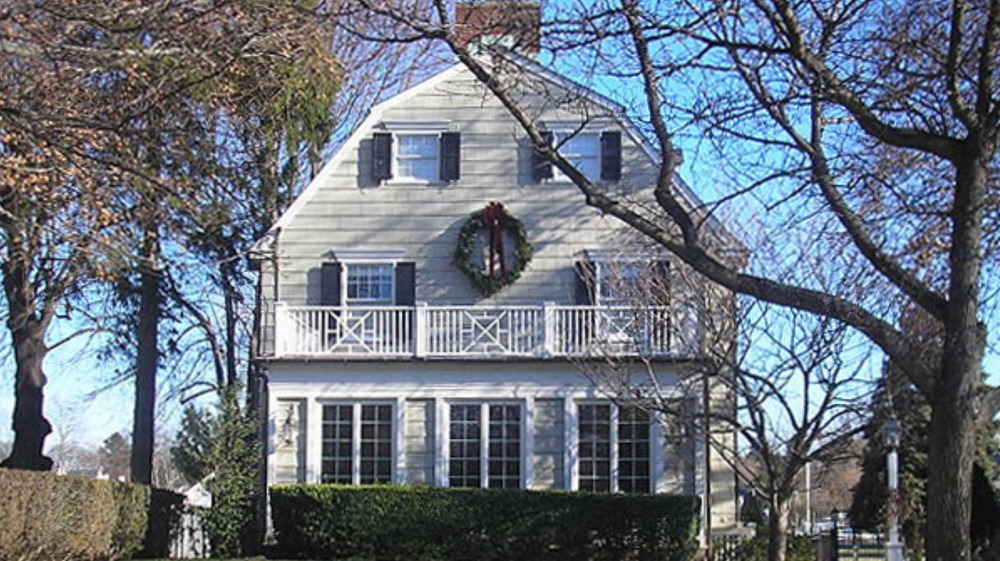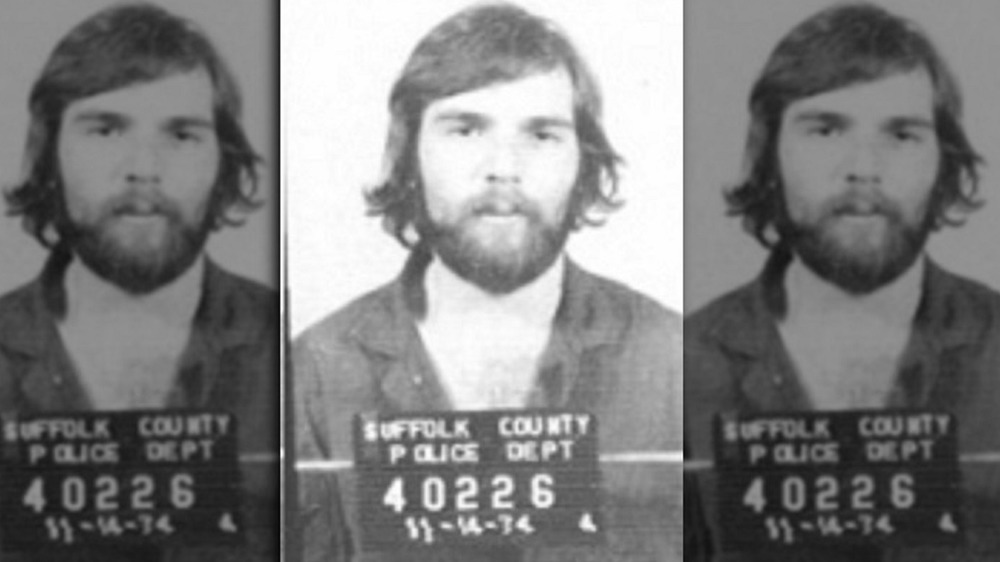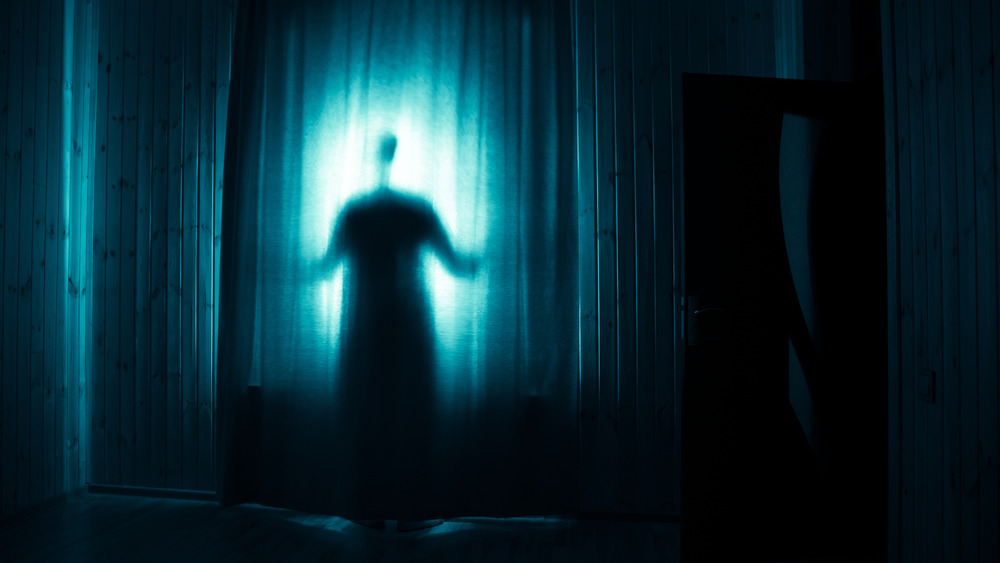The Amityville Horror: The Truth About The DeFeo Murders
When we're talking about the Amityville Horror case, we're really talking about three separate things: the original murders perpetrated by Ronald DeFeo, Jr. within his family's home; the supposed haunting of the premises that besieged the Lutz family, who moved in the year after, in 1975; and how those hauntings and their antecedent crimes have been portrayed and leveraged into cash by Hollywood.
The Amityville Horror case — including its "Horror House," last up for sale in 2016 for $850,000, per the Washington Post – took place in Long Island. The case has been the subject of no less than 28 films, some more ludicrous and spin-offy than others (there are so many Amityville movies that Fansided has a top 15 list), and an investigation that expanded beyond the original murders of four siblings and two parents and into the realm of the spectral, supernatural, and even satanic. (Those creepy Conjuring movies? They were based on the cases of the same paranormal investigators, Ed and Lorraine Warren, who popularized the Amityville Horror "haunting.")
For the sake of this article, we're going to focus on the original, tangible, material crime, without any demons, ghoulies, ghosties, goblins, producers, or "light trance mediums." To that end, we travel to 112 Ocean Avenue, south of Amityville Creek in Long Island, New York, early evening, November 13, 1974.
A disturbed young man who pretended to find his own murder victims
Twenty-three-year-old Ronnie "Butch" DeFeo (pictured above) barged into his local bar at 6:30 p.m. on November 13, 1974, howling, "You got to help me! I think my mother and father are shot!" Typically DeFeo would slip out of work early, around noon, and meet his friends for rounds of drinks and complaining. As All That's Interesting says, he'd grown up under the boot heel of a "domineering" father and grown dependent on alcohol at an early age. He'd once threatened his father with a 12-gauge shotgun, and barely held onto his job doing odds and ends at family-owned Brigante-Karl Buick dealership in Brooklyn, New York.
When folks at the bar followed him back to his house on Ocean Avenue, they found his mother, father, and four siblings on their beds, shot with what was later identified as a .35-caliber rifle. There were no signs of a struggle, and the neighbors had heard no noises coming from the house beyond the barks of the family dog.
Police investigations revealed that everyone had been murdered at around 3:15 a.m. DeFeo's story changed over time, and he eventually accused "mob hitman" Louis Falini of the crime. Falini, however, had been out of state, and before long DeFeo fessed up.
On October 15, 1975, nearly a year later, DeFeo finally stood trial. This is when he first pulled his "evil voices made me do it" defense.
Blood and parricide on an otherwise normal day
DeFeo had displayed a history of violence and criminal intent long before the murder of his family. As Biography explains, he was emotionally unstable his entire life. His parents tried to bribe him into good behavior through gifts and money, including a $14,000 speedboat (they were fairly well-off) after he refused to go to see a psychiatrist. He was expelled from school for violent outbursts and started using LSD and heroin, in addition to alcohol, by age 17. In return, in parents rewarded him with a job at their car dealership, to which DeFeo responded by stealing $20,000 of the business's money that he'd been asked to deposit in the bank. When police questioned Ronnie, his father got suspicious. When his father questioned Ronnie, Ronnie threatened to murder him. Shortly afterwards, he did.
Criminal Discourse Podcast outlines a disturbing timeline for the day. After murdering his family, DeFeo showered and got dressed as usual, and got to work at 6:30 a.m. He was later found in his car, asleep, by the dealership's service manager. His father, who also worked there, never showed up. Neighbor Catherine O'Riley, who picked up the DeFeo kids on the way to school every morning, knocked and no one answered. She tried again at 8:40 a.m. and 5 p.m. Nothing. Earlier that morning, another neighbor noticed lights on in the third story of the DeFeo household, which was unusual for that time of day.
A life in prison with every appeal for parole denied
Ronald DeFeo Sr., 43; Louise, 42; Dawn, 18; Allison, 13; Marc, 11; and John, 9. It makes sense to wish that only insanity could account for such an act, as DeFeo's lawyer William Weber tried to claim. Or "evil spirits," as DeFeo claimed. Or demonic entities, as the Amityville movies convey. Anything besides just a person.
But no. As History relates, the psychiatrist for the prosecution, Dr. Harold Zolan, claimed that DeFeo suffered from antisocial personality disorder (displaying a lack of care for the well-being of others), while the psychiatrist for the defense, Dr. Daniel Schwartz, claimed that DeFeo suffered from dissociative disorder (jumbled, disoriented thinking). The jury, who bought neither hocus-pocus nor excuses, sided with the prosecution. A mere month after DeFeo's trial began, on November 21, 1975, the jury found him guilty of six counts of second-degree murder, and he was later sentenced to six consecutive sentences of 25 years to life in prison. DeFeo, who at the time of his confession stated, "Once I started, I just couldn't stop. It went so fast," went on to renege while in prison and claim that other people and accomplices were responsible.
Ronald "Butch" DeFeo, Jr., is still alive as of 2021 and serving out his sentence at Green Haven Correctional Facility in Beekman, New York. He has repeatedly attempted to appeal to his parole board, but has been denied each time.



